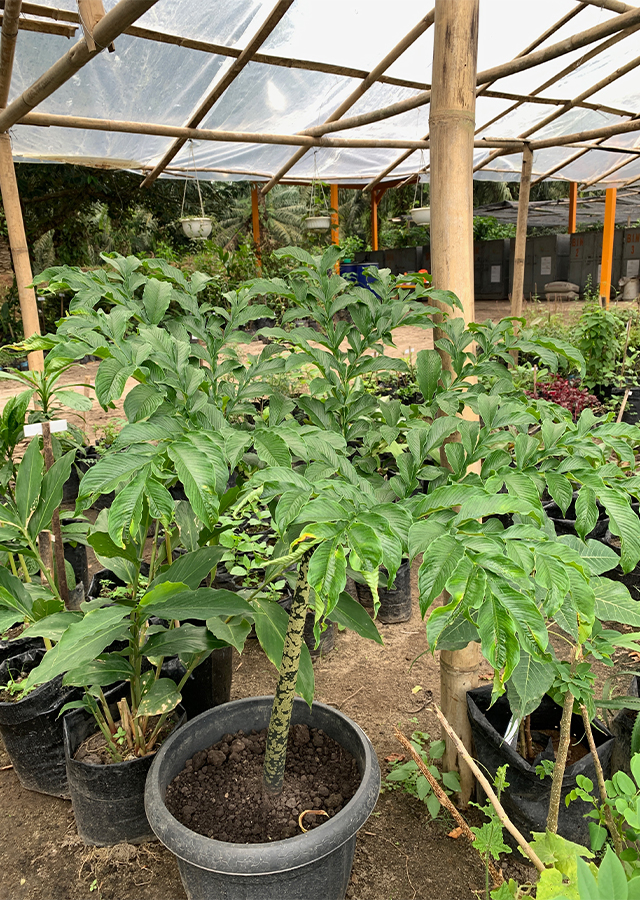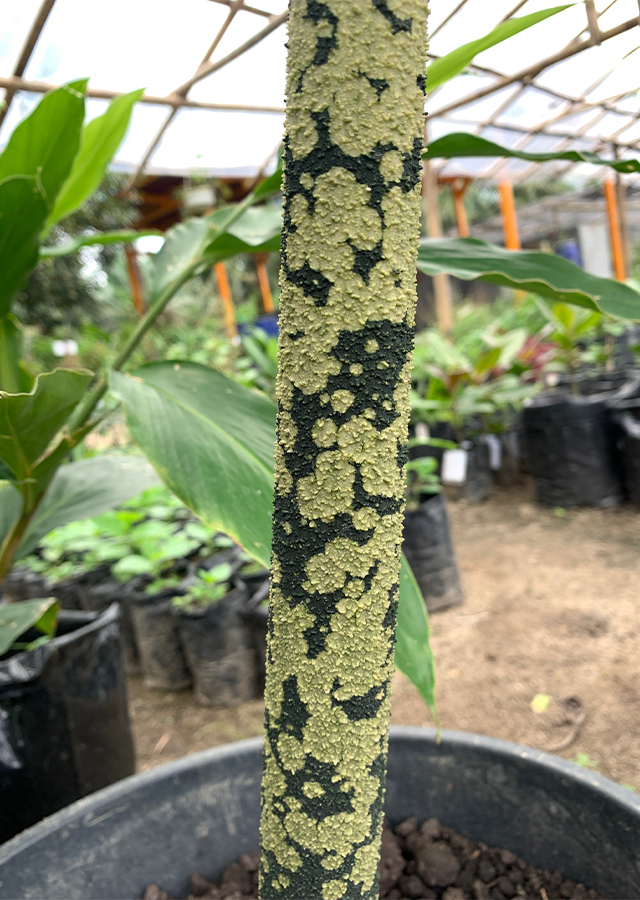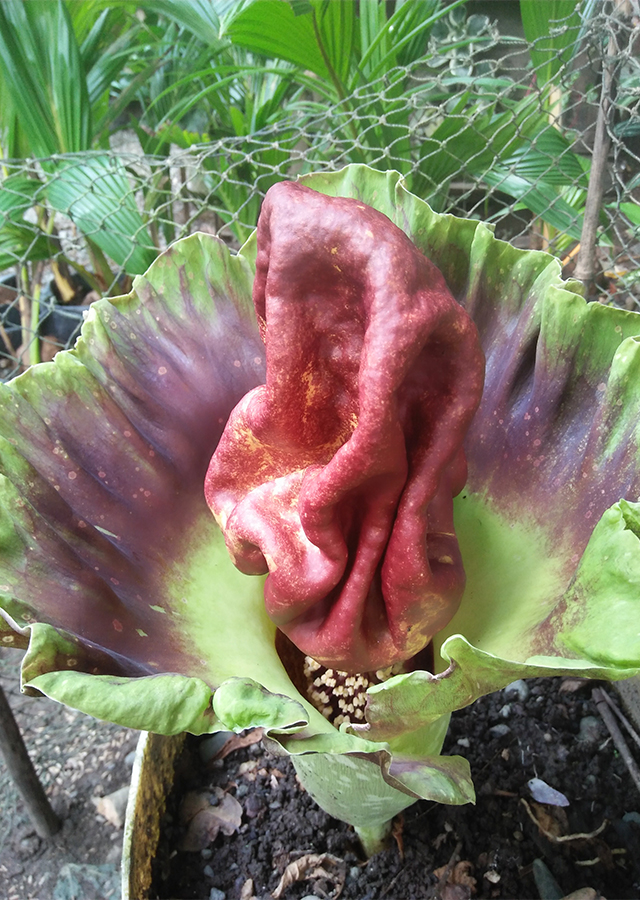Elephant Food Yam
Amorphophallus paeoniifolius (Dennst.) Nicolson
Araceae
Location in our garden
Principal



Synonym
Amorphophallus campanulatus Decne.
Arum campanulatum Roxb.
Arum decurrens Blanco
Habitus
Herbaceous. A herbaceous, perennial plant that can grow up to 2,5 m tall. the plant produces an umbrella-like crown that can reach 3 m in diameter
Part Used
Leaves
Roots
Tuber
Growing Requirements
Need Shade
Habitat
Forest
Shrublands
Grassland
Overview
The plant species is originated from South and Southeast Asia. The plant is also widely distributed in Indonesia and can grow in gardens, rice fields, and pond edges. The plant is traditionally used as a food supplement, in fish food, and in cultural ceremonies.
Vernacular Names
Suweg (Indonesia), you bing mo yu (China), suranah (Sanskrit).
Agroecology
Elephant food yam thrives on secondary forests and highly disturbed areas. The plant can grow in partial shade or fully exposed conditions in fertile and well-drained black or sandy loam soil. The plant may occur in seal level up until 800 m altitudes. A hot and humid condition is preferable.
Morphology
- Roots - roots are modified into the fleshy tuber, tuber dark brown, depressed globose, annulate, with root scars visually prominent.
- Stems - above-ground stem absent and replaced by stem-like leaf stalk, the leaf stalk is solitary, flashy, green with pale green dots pattern.
- Leaves - the leaf blade is divided into numerous leaflets, the leaflets are green or pale green, orbicular, oval, ovate, obovate, elliptic, elliptic-oblong, elliptic-lanceolate, or lanceolate.
- Flowers - held by a single spadix, the spathe is dark brown or maroon inside, pale green with white spot outside, the spathe is velvet-like, funnel-shaped, the flower produces an unpleasant odor.
- Fruits - berries, elongated, green to yellow or bright red during maturation, in close or slightly distant arrangement.
Cultivation
Easily propagated by tuber.
Chemical Constituents
Protein, carbohydrates, flavonoids, tannins, alkaloids, and saponin.
Traditional Medicinal Uses
- The plant species tubers are traditionally used to treat various health conditions including digestive complaints such as vomit, anorexia, dyspepsia, flatulence, colic, and constipation.
- The same organ is also used to treat breath-related medical conditions such as cough, bronchitis, and asthma.
- The tuber is also believed to treat anemia, seminal weakness, fatigue, dysmenorrhoea, liver problem, tumor, hemorrhoids, and numerous illnesses. The tuber is also can be used as a tonic and aphrodisiac.
Part Used
Reference Sources
- Dey, Y.N., Ota, S., Srikanth, N., Jamal, M. and Wanjari, M., 2012. A phytopharmacological review on an important medicinal plant-Amorphophallus paeoniifolius. Ayu, 33(1), p.27.
- 'eFloras (2008). Published on the Internet http://www.efloras.org [accessed 2 November 2021]*' Missouri Botanical Garden, St. Louis, MO & Harvard University Herbaria, Cambridge, MA. http://www.efloras.org/florataxon.aspx?flora_id=2&taxon_id=242302701.
- Flora & Fauna Web. 2020. https://www.nparks.gov.sg/florafaunaweb/flora/1/6/1659.
- Mutaqin, A. Z., D. Kurniadie, J. Iskandar, M. Nurzaman, and T. Husodo. Utilization and Cultivation of Suweg (Amorphophallus paeoniifolius (Dennst.) Nicolson in Areas around Ciremai Mount, Cimanuk Watershed Region. In E3S Web of Conferences, vol. 249, p. 03003. EDP Sciences, 2021.
- Singh, A. and Wadhwa, N., 2014. A review on multiple potential of aroid: Amorphophallus paeoniifolius. Int J Pharm Sci Rev Res, 24(1), pp.55-60.


